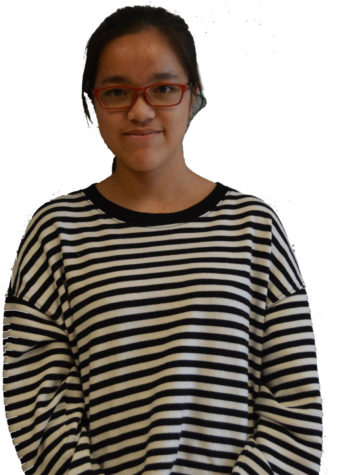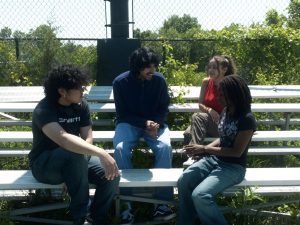Are All Schools Created Equal?
October 26, 2018
Evaluating global and national education systems is difficult and time-consuming, and oftentimes a single measurement cannot account for everything that makes up a good education. However, there is one particular evaluation system that can provide some of the clearest insights into academic performance, accessibility, and equity of education systems around the world: international exams.
One of these exams is the Programme for International Student Assessment (PISA), an exam conducted once every three years by the Organization for Economic Cooperation and Development (OECD). The PISA assesses science, reading, and mathematics knowledge of 15-year-olds (international age) from, as of 2015, seventy-two countries. The exam’s results, published on the OECD’s official website, still stir controversy despite the test having been conducted three years ago.
According to National Center for Education Statistics (NCES), which organizes the PISA in the U.S., student sampling for the exam is an arduous process. For it to begin, each participating national or subnational (e.g. state) education system has to first submit a sampling frame consisting of students between the ages of 15 years and 3 months old to 16 years and 2 months old (in grades 7-12) for the OECD to evaluate.
The OECD then “draws a scientific random sample of a minimum of 150 schools from each frame with two replacement schools for each original school” and, if the schools agree to participate, 5,400 students from each country (or 1,500 from each subnational education system), all attending the 150 selected schools, will be listed on a student sampling list that is to be submitted to the OECD for finalization.
“The OECD’s international contractor… perform[s] data validity checks to compare each list against what is known of the schools (e.g., expected enrollment, gender distribution) and PISA eligibility requirements (e.g., grade and birthday ranges),” the NCES notes. Following this process, students will await the notification of the exam coming from their schools or education systems.
The U.S., which was represented by Massachusetts, North Carolina, and Puerto Rico (all registered under the name of the United States) on the 2015 PISA, came in 25th on the test rankings, while Singapore and Japan – not surprisingly – ranked first and second, respectively. What is notable, though, is that American students had scored twenty points below the OECD average in mathematics on the test.
Since the release of these results, the U.S. school system has received widespread criticisms from the press and the public.
One person who has sought answers to America’s struggling schools is Abigail Cox of the Minerva Schools at Keck Graduate Institute (Claremont, CA). Cox describes what she considers to be the largest issues facing the U.S. education system in her piece, “The Current Education System is Failing our Students.”
Uneven distribution of funding, Cox finds, has led to courses being cut, cancelling of programs, and the elimination of teaching positions in school districts that do not receive enough government aid. Further, socioeconomic inequality has led to unequal access to resources among students, which could affect their performances significantly.
The U.S. and top-scorers like Singapore and Japan are all developed nations in which education is highly valued and that is supported with large portions of federal funding. So, what really creates the difference between our students and theirs?
For one thing, children in top-performing countries like Singapore and Japan enroll in mathematical, science, and literacy enrichment programs at a very young age (4-5 years old) compared to their peers in other countries, according to Australian Broadcasting Corporation (ABC) reporter Shivali Nayak’s “Singapore schools: ‘The best education system in the world’ putting significant stress on young children.”
“[T]he best schools in [Beijing and Shanghai] offer students rich opportunities … to pursue their personal interests… that are unusual in public schools in the United States,” says Hernando Reimers in his US News and World Report article “Singapore’s Lessons about Education.” Reimer also mentions that schools in China and Singapore often cooperate with private organizations, government bodies, and foreign educators to develop better learning methods.
Something the U.S. succeeds in doing that many of these developed nations do not , on the other hand, is make education as accessible as possible, which is why it is so expensive. The 2015 PISA results illustrate that the U.S. education system is one of the most accessible to immigrants and people of different social backgrounds, especially in comparison to top-scorers like China and Finland, both of whom were in the top 5 of the 2015 PISA rankings.
Supporters of the U.S. school system, including Steven Singer, author of the article “U.S. Public Schools Are Not Failing. They’re Among The Best In The World,” also argue that it has been making consistent progress on the national stage over time. Although our scores are not the highest, they have gone up in different portions of international assessments, such as in the Trends in International Mathematics and Science Study (TIMSS) since the exam was created in 1995. Our rankings on the PISA, according to Singer, have also remained the same over the years rather than getting worse like critics claim them to be. Moreover, many industrialized nations, such as Norway, held similar rankings to our country, and yet everybody seems to ignore the fact that not all developed countries are top-scorers.
The next PISA exam is set to be conducted this fall, though results will not be released until 2019, according to the NCES. It will provide further insight into the American school system, reaffirm or disprove critics’ arguments about it, and shed light on our progress and areas of improvement












































